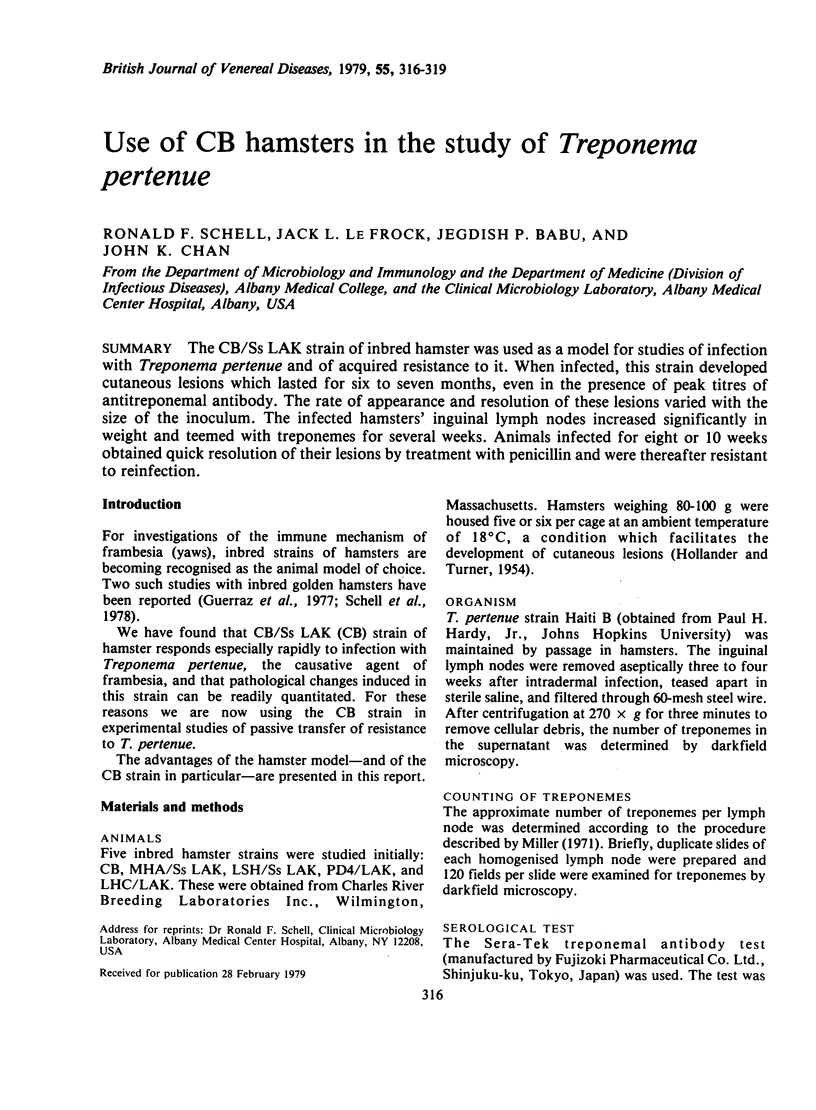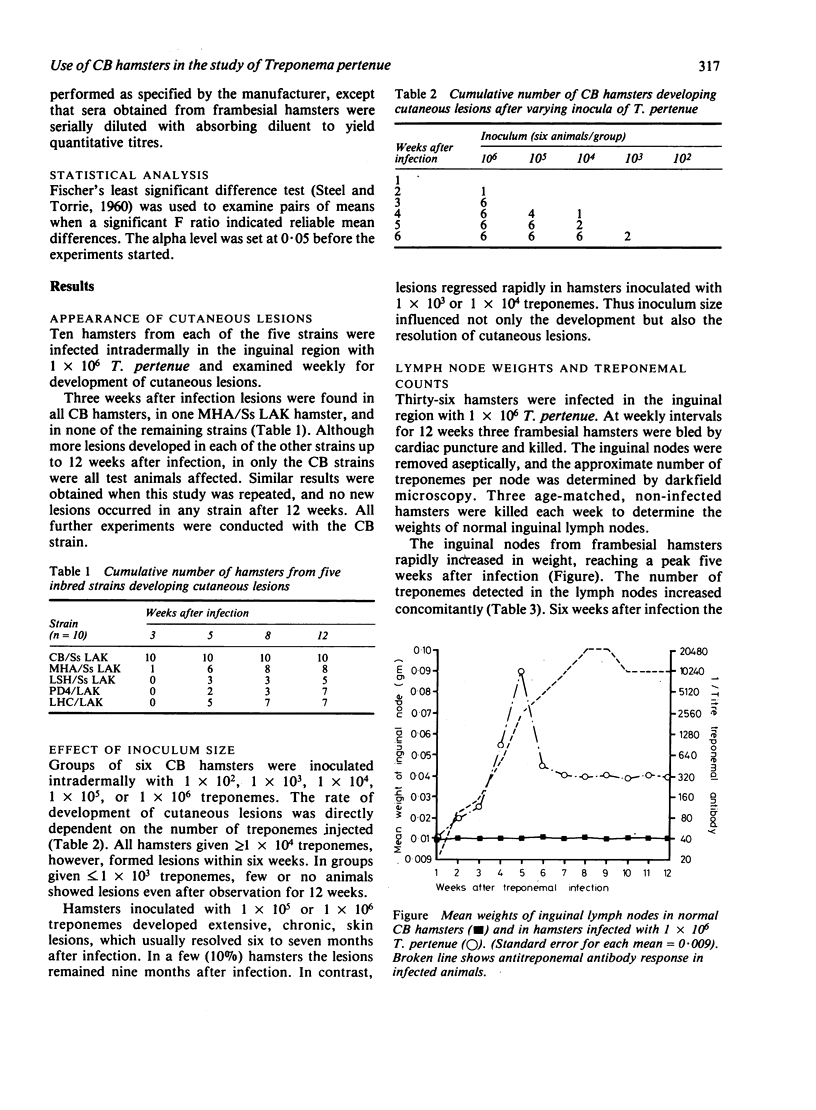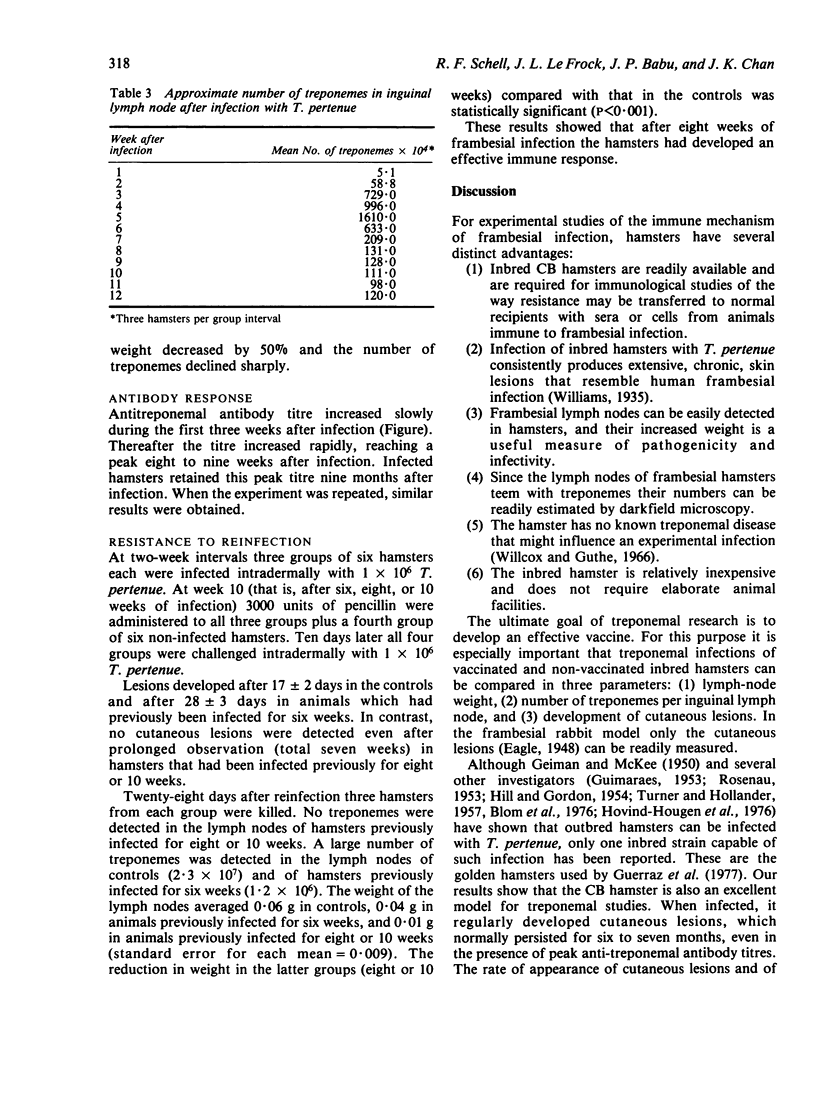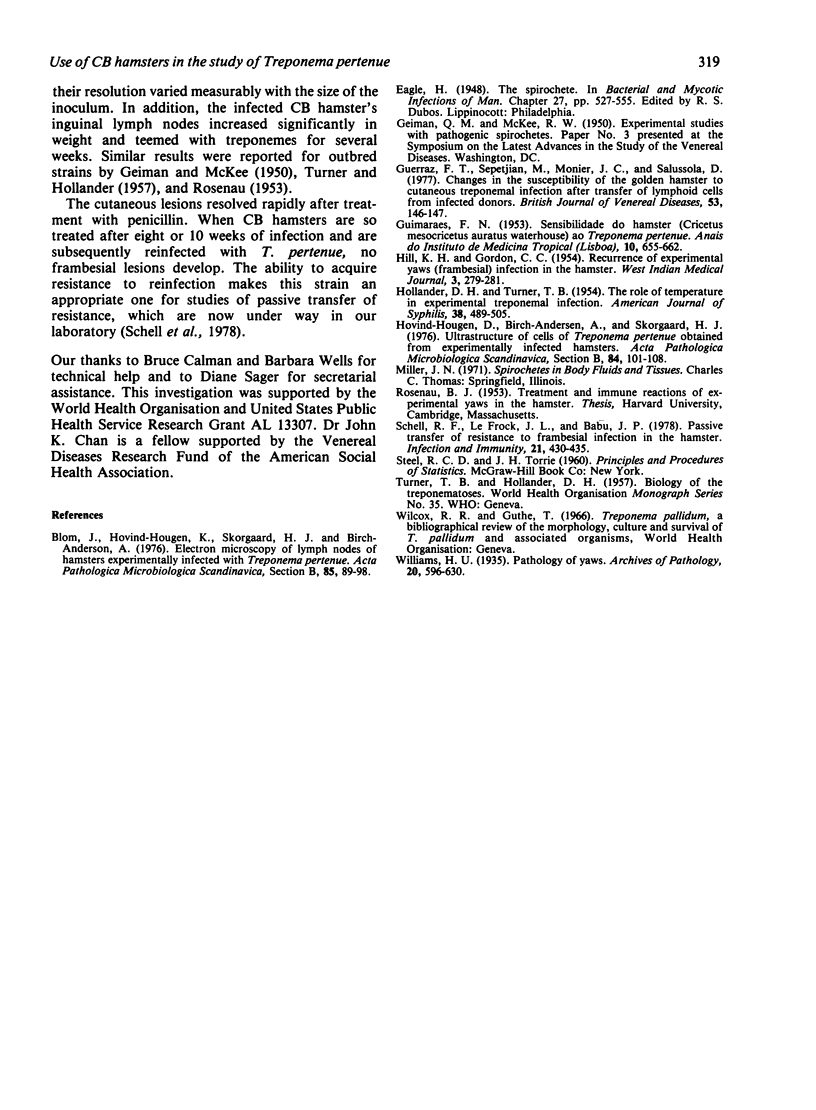Abstract
The CB/Ss LAK strain of inbred hamster was used as a model for studies of infection with Treponema pertenue and of acquired resistance to it. When infected, this strain developed cutaneous lesions which lasted for six to seven months, even in the presence of peak titres of antitreponemal antibody. The rate of appearance and resolution of these lesions varied with the size of the inoculum. The infected hamsters' inguinal lymph nodes increased significantly in weight and teemed with treponemes for several weeks. Animals infected for eight or 10 weeks obtained quick resolution of their lesions by treatment with penicillin and were thereafter resistant to reinfection.
Full text
PDF



Selected References
These references are in PubMed. This may not be the complete list of references from this article.
- GUIMARAES F. N. Sensibilidade do hamster (Cricetus mesocricetus auratus Waterhouse) ao Treponema pertenue. An Inst Med Trop (Lisb) 1953 Sep;10(3 1):655–662. [PubMed] [Google Scholar]
- Guerraz F. T., Sepetjian M., Monier J. C., Salussola D. Changes in the susceptibility of the golden hamster to cutaneous treponemal infection after transfer of lymphoid cells from infected donors. Br J Vener Dis. 1977 Apr;53(2):146–147. doi: 10.1136/sti.53.2.146-a. [DOI] [PMC free article] [PubMed] [Google Scholar]
- HILL K. R., GORDON C. C. Recurrence of experimental yaws (framboesial) infection in the Hamster. West Indian Med J. 1954 Dec;3(4):279–281. [PubMed] [Google Scholar]
- HOLLANDER D. H., TURNER T. B. The role of temperature in experimental treponemal infection. Am J Syph Gonorrhea Vener Dis. 1954 Nov;38(6):489–505. [PubMed] [Google Scholar]
- Hovind-Hougen K., Birch-Andersen A., Jensen H. J. Ultrastructure of cells of Treponema pertenue obtained from experimentally infected hamsters. Acta Pathol Microbiol Scand B. 1976 Apr;84(2):101–108. doi: 10.1111/j.1699-0463.1976.tb01909.x. [DOI] [PubMed] [Google Scholar]
- Schell R. F., Le Frock J. L., Babu J. P. Passive transfer of resistance to frambesial infection in hamsters. Infect Immun. 1978 Aug;21(2):430–435. doi: 10.1128/iai.21.2.430-435.1978. [DOI] [PMC free article] [PubMed] [Google Scholar]


